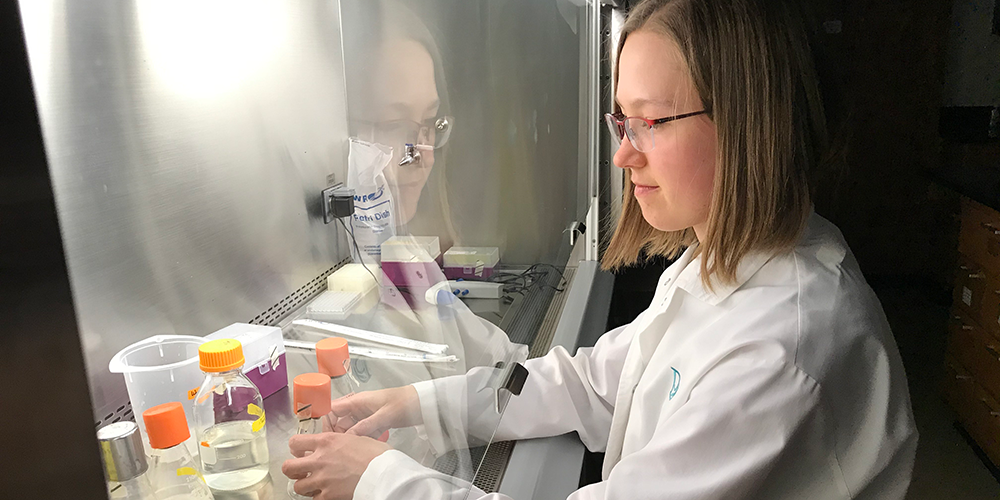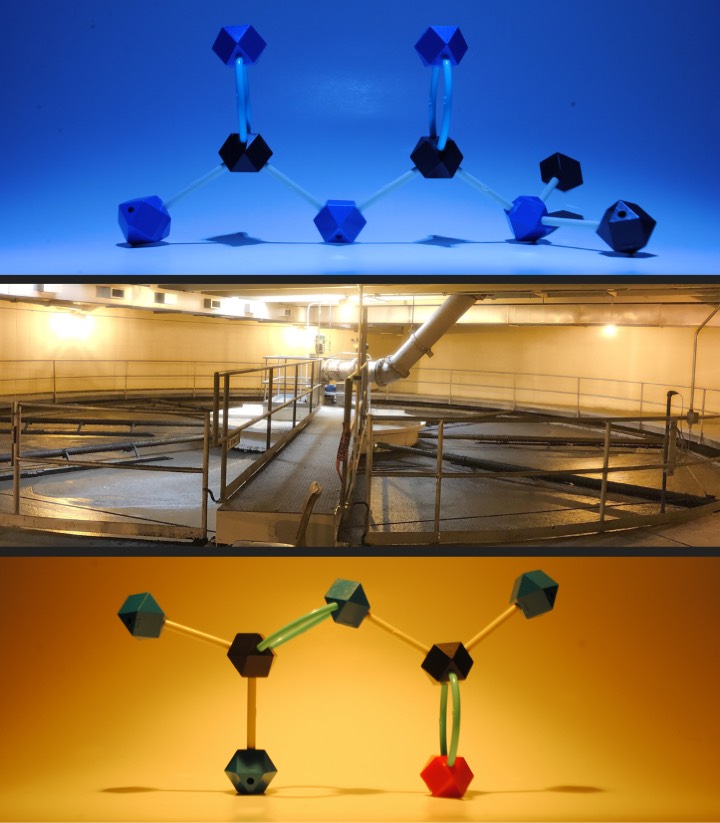Using bacteria to clean the environment
In recent years, concerns have heightened about increasing amounts of drugs in the environment, particularly in water. While the impact of this environmental pollution is not well understood, some evidence indicates that these drugs may be entering the food chain. Researchers believe that most of the drugs that end up in fresh water first accumulate at wastewater treatment facilities. Therefore, there is a need to eliminate the drugs at these facilities.
Ashley Robinson, a senior biochemistry major at Hamline University who plans to start graduate school in the fall, started doing research in her sophomore year. She is presenting a poster at the 2021 ASBMB Annual Meeting on this topic, the third research project she has worked on with Betsy Martínez–Vaz.

The researchers’ goal was to find bacteria that break down metformin, a drug commonly used to treat diabetes in the U.S. and around the world. Little research has been done on the impact of pollution with metformin and its byproduct, guanylurea, which are not fully metabolized by humans and thus are excreted into wastewater systems. “We consider them to be emerging pollutants,” Robinson said.

Studies have demonstrated the potential for metformin to disrupt some hormones, she explained. The drug is considered an endocrine disruption agent in some small fishes, and guanylurea has been shown to interfere with the nitrogen cycle in soil. Little is known about its bioaccumulation potential.
“Can these molecules pass up the food chain?” Robinson said. “That is one concern that we have.”
The research team collected samples at a local wastewater treatment facility from several stages of the treatment process. The bacteria in the samples were then grown in the lab under limiting conditions, meaning the bacteria were not given all the nutrients they needed. In this case, their only source of nitrogen was metformin, so most of the bacteria that survived were species that could use metformin as a nitrogen source. The team then used metagenomics to identify the enzymes involved in the breakdown of guanylurea and its transformation product guanidine. They identified three enzymes: guanylurea hydrolase, carboxyguanidine deiminase and allophanate hydrolase.
Robinson and her colleagues are now working to identify the enzyme that breaks down metformin in the initial step that forms guanylurea. They hope the enzymes they find could be used to break down metformin and guanylurea at wastewater treatment facilities, keeping these pollutants out of freshwater systems.
Enjoy reading ASBMB Today?
Become a member to receive the print edition four times a year and the digital edition monthly.
Learn moreGet the latest from ASBMB Today
Enter your email address, and we’ll send you a weekly email with recent articles, interviews and more.
Latest in Science
Science highlights or most popular articles

Bacteriophage protein could make queso fresco safer
Researchers characterized the structure and function of PlyP100, a bacteriophage protein that shows promise as a food-safe antimicrobial for preventing Listeria monocytogenes growth in fresh cheeses.

Building the blueprint to block HIV
Wesley Sundquist will present his work on the HIV capsid and revolutionary drug, Lenacapavir, at the ASBMB Annual Meeting, March 7–10, in Maryland.

Gut microbes hijack cancer pathway in high-fat diets
Researchers at the Feinstein Institutes for Medical Research found that a high-fat diet increases ammonia-producing bacteria in the gut microbiome of mice, which in turn disrupts TGF-β signaling and promotes colorectal cancer.

Mapping fentanyl’s cellular footprint
Using a new imaging method, researchers at State University of New York at Buffalo traced fentanyl’s effects inside brain immune cells, revealing how the drug alters lipid droplets, pointing to new paths for addiction diagnostics.

Designing life’s building blocks with AI
Tanja Kortemme, a professor at the University of California, San Francisco, will discuss her research using computational biology to engineer proteins at the 2026 ASBMB Annual Meeting.

Cholesterol as a novel biomarker for Fragile X syndrome
Researchers in Quebec identified lower levels of a brain cholesterol metabolite, 24-hydroxycholesterol, in patients with fragile X syndrome, a finding that could provide a simple blood-based biomarker for understanding and managing the condition.

